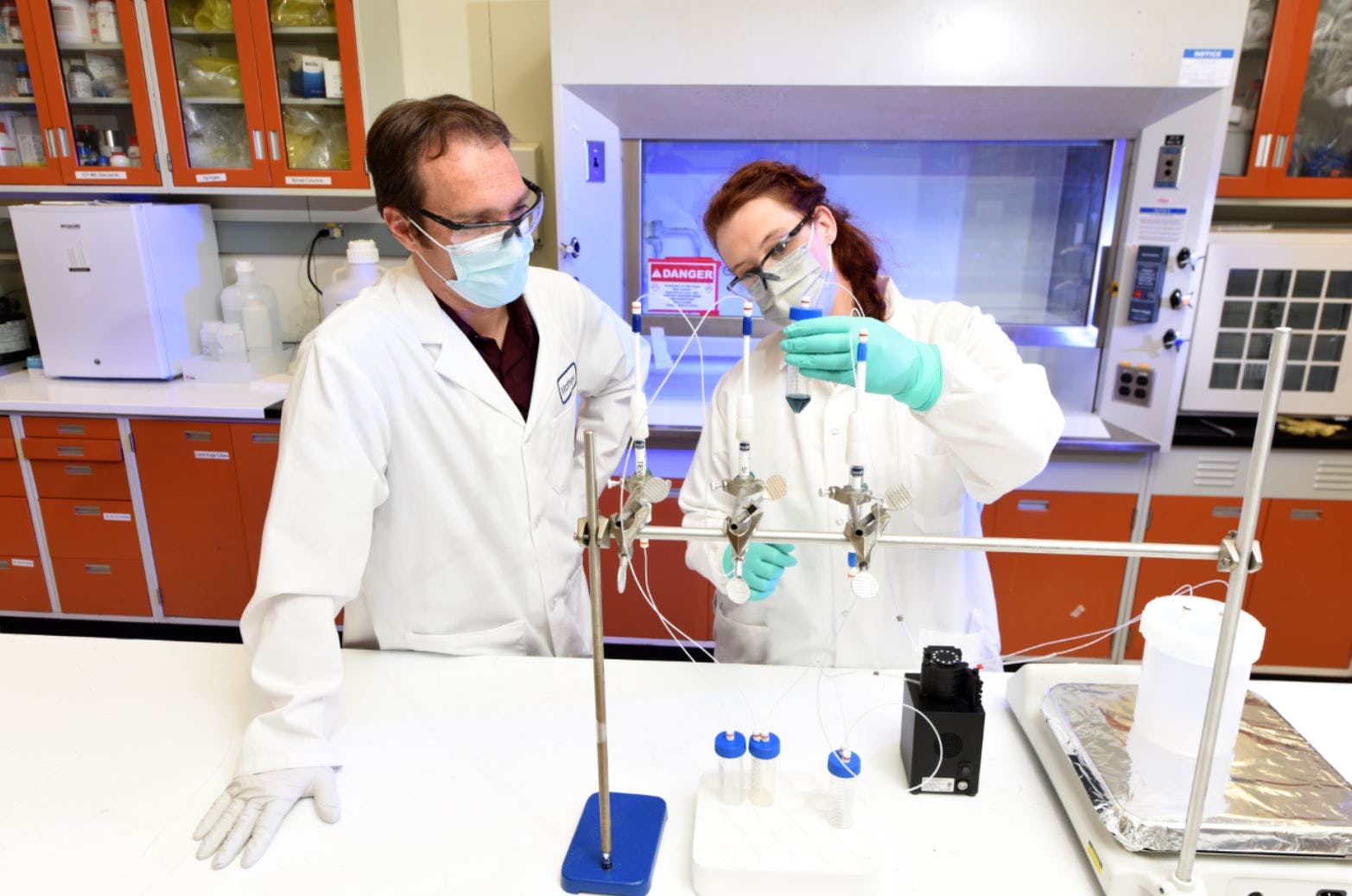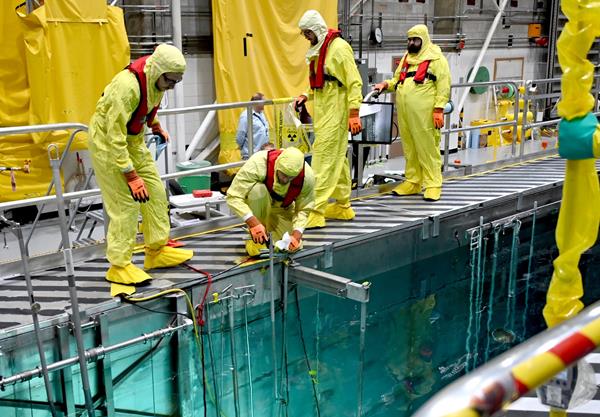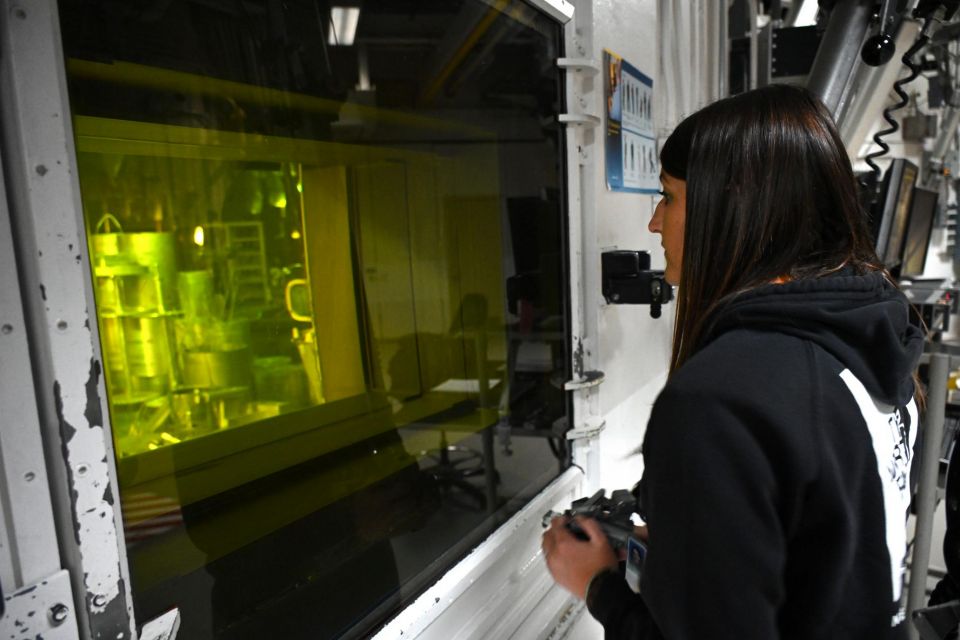INL scientists Matt Snow and Jessica Ward hold a natural vanadium solution that will be separated into the cancer-treating isotope scandium-47. (Photo: INL)
Idaho National Laboratory researchers have, for the first time, used a novel technique using high-energy photons to produce scandium-47 from the element vanadium. The project is a collaboration with Jon Stoner and John Longley from Idaho State University’s Idaho Accelerator Center and Tara Mastren from the University of Utah. The results are published in the journal Applied Radiation and Isotopes.
Scandium-47: According to INL, a previous method to make Sc-47 (using calcium or titanium targets) is expensive and the yield of the desired isotope is low, with a mixture of hazardous scandium isotopes included that cannot be chemically purified. Using vanadium instead to make Sc-47 is not only less expensive and more widely available, but it also produces far fewer hazardous scandium isotopes.
Medical tool: The research may lead to the use of Sc-47 as a dual-purpose diagnostic and therapeutic tool that could be useful for diagnosing and treating neuroendocrine tumors or prostate cancers.
“The medical community has known for some time that Sc-47 has valuable theranostic properties,” said Mathew Snow, a radiochemist and program manager at INL who led the project. “The main problem is they haven’t been able to find a way to produce it in very large quantities. The quantities, as well as the impurities, are the two big showstoppers.”
The project: Throughout the research and development process, the researchers demonstrated the ability to bombard vanadium targets with energetic photons in a linear accelerator and produce samples as high as 99.998 percent pure. If the research moves forward for cancer therapy, a dedicated accelerator designed in the 20–26 million electron-volts range would be able to repeatably produce this level of purity.
“This research has shown that we can produce Sc-47 in very high purity, maybe the highest in the world,” Snow said.
For more details, see INL’s article about the project online.








